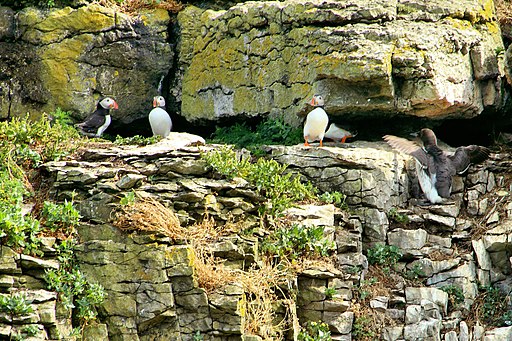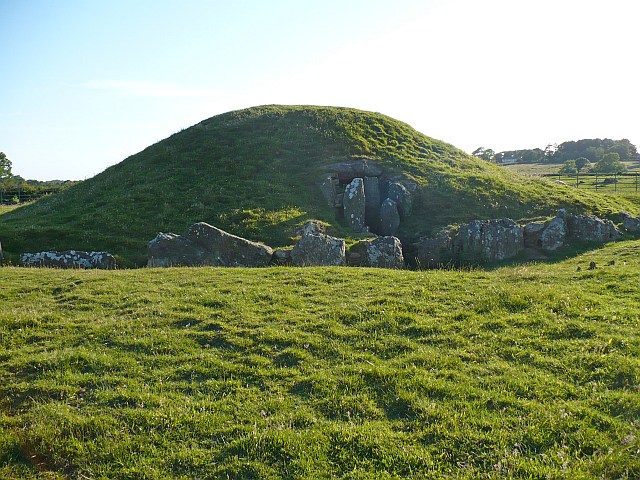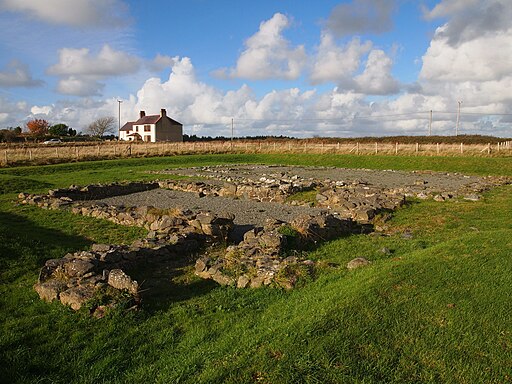Search the Gazetteer
Are the results not as expected? Modify your search term or change the scope to refine your search.
Results for a place that exactly matches ...
Anglesey
Anglesey, Wales
 Anglesey (Sir Fôn) is an island county, separated from Caernarfonshire by the Menai Straits, spanned by the Britannia Bridge and the Menai Suspension Bridge. There are two main islands: Anglesey itself and Holy Island to the west, joined to the main isle by a causeway. The northern coast is rocky and a haven for seabirds. Elsewhere the coast is gentler and dotted with shingle and sandy beaches. There are many antiquities, including Beaumaris Castle and the ruins of St Dwynwen's Church. Holyhead is a major ferry terminal. Elsewhere Anglesey remains a pretty, quiet and mainly Welsh-speaking county, whose most important industries are agriculture and tourism.
Anglesey (Sir Fôn) is an island county, separated from Caernarfonshire by the Menai Straits, spanned by the Britannia Bridge and the Menai Suspension Bridge. There are two main islands: Anglesey itself and Holy Island to the west, joined to the main isle by a causeway. The northern coast is rocky and a haven for seabirds. Elsewhere the coast is gentler and dotted with shingle and sandy beaches. There are many antiquities, including Beaumaris Castle and the ruins of St Dwynwen's Church. Holyhead is a major ferry terminal. Elsewhere Anglesey remains a pretty, quiet and mainly Welsh-speaking county, whose most important industries are agriculture and tourism.Portrait of Anglesey
Type: Historic County
Lat, Long: 53.26088,-4.377176
Grid Reference: SH415764
Country: Wales
 Explore Anglesey on Wikishire
Explore Anglesey on WikishireAnglesey is the only county in Wales that is not mountainous, the highest point being Holyhead Mountain (722 feet). The main rivers are the Braint and the Cefni. The county flower is the Spotted Rock-rose

The Menai Suspension Bridge
Anglesey's entire rural coastline had been designated an Area of Outstanding Natural Beauty and features many sandy beaches, especially along its eastern coast between the towns of Beaumaris and Amlwch and along the western coast from Ynys Llanddwyn through Rhosneigr to the little bays around Carmel Head. The northern coastline is characterised by dramatic cliffs interspersed with small bays, a haven for nesting seabirds, choughs and ravens. Puffin Island, an uninhabited island of the eastern tip of Anglesey, is a breeding ground for huge numbers of seabirds.

Puffins on Puffin island
Ynys Llanddwyn is a small tidal island off the coast near Newborough. The island is rich in legends, in particular in its association with St Dwynwen, the Welsh patron saint of lovers. The ruined remains of St Dwynwen's Church are on the island, as is the 1873 Tŵr Mawr Lighthouse which marks the western entrance to the Menai Straits.

St Dwynwen's Church, Ynys Llanddwyn
Anglesey has several small towns. Beaumaris, in the east of the island, features Beaumaris Castle (Cadw), built by Edward I as part of his campaign in North Wales. Beaumaris acts as a yachting centre for the region, with many boats moored in the bay or off Gallows Point. Llangefni, in the centre, is the principal commercial and farming town on the island. The fishing town of Amlwch lies at the north-east of the island. The fishing village of Moelfre is popular as it is right by the large sandy beach Lligwy Bay, which is an excellent spot for water and beach sports.

Beaumaris castle
The town of Menai Bridge overlooks the Menai Strait by the bridge itself. The large village of Llanfairpwllgwyngyll, next to the Britannia Bridge, is a major tourist destination partly thanks to the long version of the name created in the 19th century which features on the railway station's name plate (i.e. 'Llanfairpwllgwyngyllgogerychwyrndrobwllllantysiliogogogoch').
Holyhead on Holy Island is the gateway of Ireland: the main ferry terminal between Great Britain and the Republic of Ireland, freight thundering back and forth along the A55 through the heart of the island. Away from the port and the road, Anglesey remains a pretty, quiet and mainly Welsh-speaking island, whose most important industries are agriculture and tourism.

Din Lligwy stone hut
Anglesey abounds in antiquities and historic sites. Bryn Celli Ddu (Cadw) is one of the finest passage tombs in Wales. Din Lligwy hut circle is an ancient village site near to Moelfre on the east coast. Near the village of Newborough, in the south-west, is the site of Llys Rhosyr, a court of the mediæval Welsh princes. Plas Newydd (NT), the country seat of the Marquess of Anglesey, stands on the Menai Strait with splendid views of Snowdonia. St Seriol's Church on the Penmon promontory on the eastern tip of Anglesey is a 12th-century church which is the main remains of a monastery founded in the Dark Ages. The two mediæval Penmon Crosses, that once stood in front of the monastery, are now inside the church. An Elizabethan dovecot stands nearby.

Bryn Celli Ddu
The numerous megalithic monuments and menhirs on Anglesey testify to the presence of humans in prehistory. Historically, Anglesey has long been associated with the druids. The island was finally brought into the Roman Empire by Gnaeus Julius Agricola in AD 78. During the Roman occupation, the area was notable for the mining of copper. The foundations of Caer Gybi, a fort in Holyhead, are Roman, and the road from Holyhead to Llanfairpwllgwyngyll was originally a Roman road. After the Roman departure from Britain in the early 5th century, pirates from Ireland colonised Anglesey and the nearby Llŷn Peninsula. In response to this, Cunedda ap Edern, a Gododdin warlord from Scotland, came to the area and began to drive the Irish out. This was continued by his son Einion Yrth ap Cunedda and grandson Cadwallon Lawhir ap Einion; the last Irish invaders were finally defeated in battle in 470.

Llys Rhosyr
As an island, Anglesey was in a good defensive position, and so Aberffraw became the site of the court, or Llys, of the Kingdom of Gwynedd. In mediæval times, Môn often had periods of temporary independence, as it was frequently bequeathed to the heirs of kings as a sub-kingdom of Gwynedd. After the conquest of Wales by Edward I, Anglesey was created a county under the terms of the Statute of Rhuddlan of 1284.

The Anglesey Flag on Holyhead Mountain
The Anglesey Flag is a banner of the arms ascribed by later mediæval heralds, to the earlier, locally celebrated ruler Hwfa ap Cynddelw.


 Menu
Menu